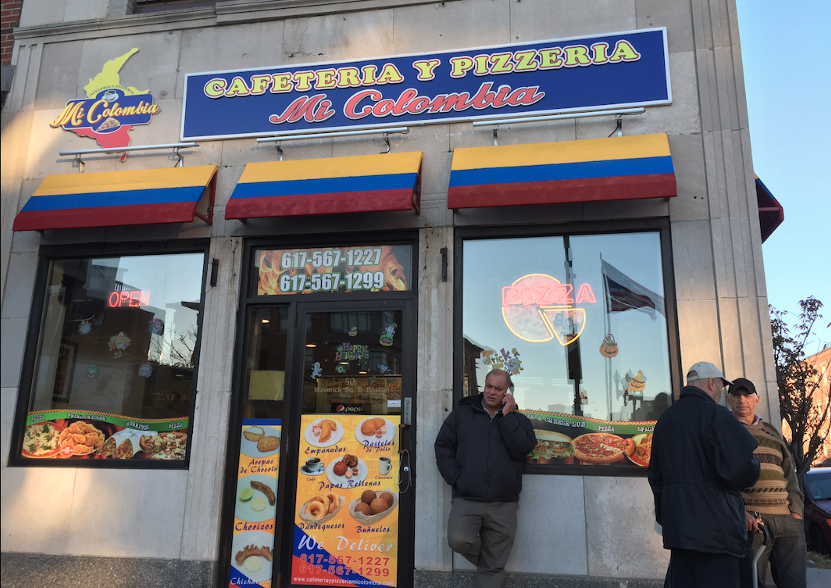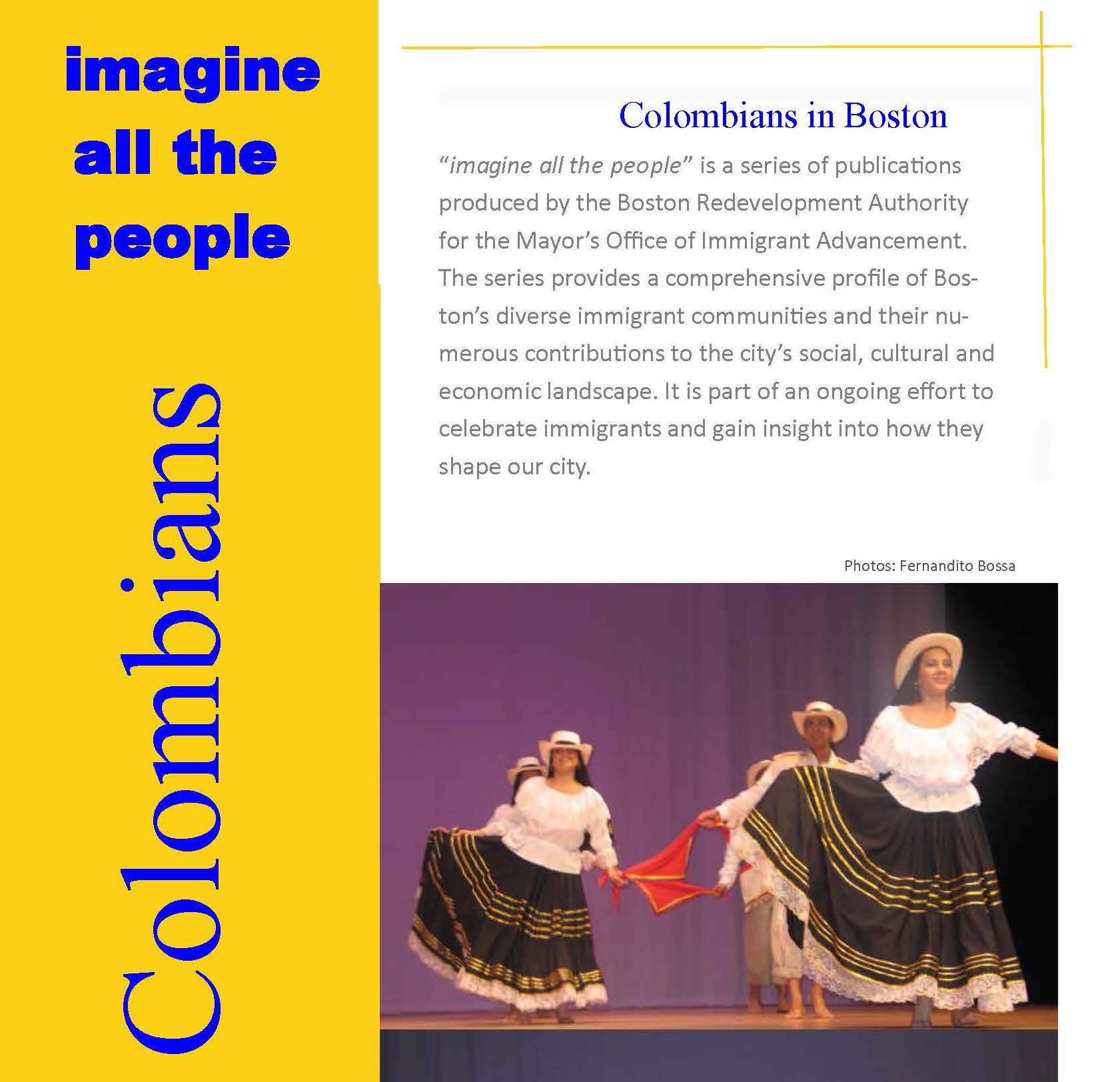Marcella Correa, the mayor of Don Matías, Colombia, addressed Colombians in East Boston in 2015. Photo by Jorge Caravallo.
Boston’s Colombian community dates back to the 1970s when skilled Colombian textile workers began migrating to Massachusetts through the H2 guest worker program. Most came from the area around Medellín in northwestern Colombia, which was the heart of the country’s textile and garment industries. They came for jobs, but also to escape La Violencía, a prolonged conflict between the two main political parties that killed or displaced tens of thousands of people.
The unrest deepened in the 1980s, as guerrilla groups such as the Revolutionary Armed Forces of Colombia (FARC) battled government forces, and violent drug cartels took hold in the region around Medillín. The widespread violence, together with neoliberal economic restructuring programs that devastated the economy in the 1990s, spurred many Colombians to emigrate and join family members in Massachusetts.
Since the 1980s, Colombians have come from the areas around Medellín and Bogotá, as well as smaller cities such as Don Matías, an agricultural center north of Medellín. Colombian migration to Boston has slowed since the 2008 recession, but according to 2015 Census estimates, more than six thousand were living in the city and seventeen thousand in the metro region.
Settlement
While Colombian workers initially settled in Lowell in the 1970s, the decline of the textile industry prompted some to seek out jobs and homes in Boston in the 1980s. Many ended up in East Boston, a predominantly Italian American neighborhood with a growing Latino population. By 2014 the neighborhood was home to more than three quarters of the city’s Colombian immigrants, who had become East Boston’s second largest foreign-born group (see Colombians in East Boston).
Across the city, Colombian immigrants can be found in neighborhoods such as Allston-Brighton, West Roxbury, Jamaica Plain, and Roslindale. North of the city, Revere also hosts a large Colombian population, with nearly three thousand living there in 2015. Both Revere and East Boston have abundant triple-decker housing which Colombians have purchased, living in one unit while renting out the other two to friends or family members. As with earlier immigrant groups, this housing arrangement has facilitated chain migration and helped Colombian homeowners pay their mortgages.
Work

Once known for its Italian eateries, East Boston now has Colombian-owned pizzerias like this one, which also serves Latin American specialties such as arepas and empanadas. Photo by Jorge Caravallo.
In the 1970s, Colombian immigrants worked mainly in the Lowell textile mills, where their skills tending and fixing old American-made looms (many of which had been sold off to Colombian textile plants) made them valuable workers. Others who had work experience in Colombia’s apparel industry, found employment in Boston’s garment shops. But as manufacturing plants closed in the 1980s, Colombian workers moved into the service sector. By 2000, more than 40 percent of foreign-born Colombians in the city were employed in service work, with many in lower paying jobs such as food serive, cleaning, and maintenance.
On the bright side, Colombians have made marked strides in retail sales and self employment. The percentage of self-employed Colombians has grown from 2 percent in 2000 to nearly 10 percent in 2013, with many Colombian-owned stores and businesses operating in East Boston. Such businesses have provided employment for the community but also helped entrepreneurs to support family and businesses back home. Remittances sent back to the town of Don Matías, for example, have helped support local businesses and improvement projects, cementing bonds between the two communities.



